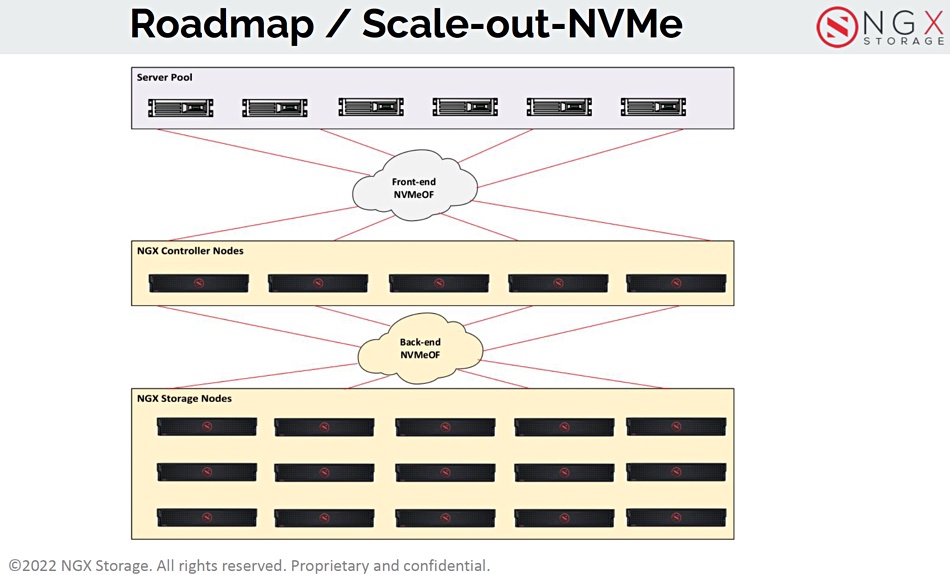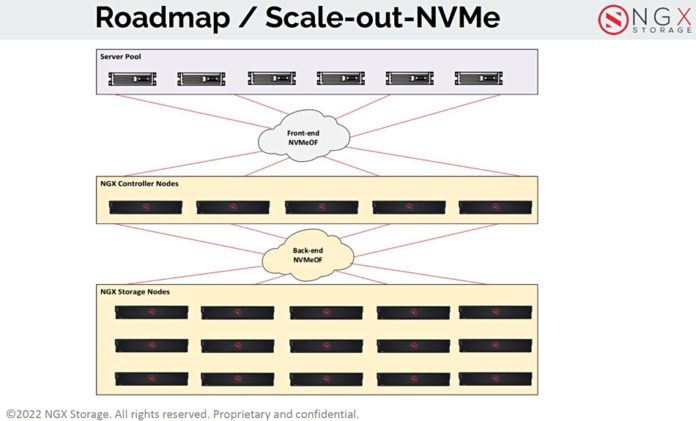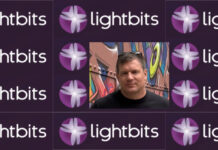NGX Storage, a Turkish storage outfit, is developing a scale-out NVMe block storage array with a top-level hardware architecture similar to VAST Data’s Universal Storage scale-out filer array.
Privately owned NGX, founded in 2015 and based in Ankara, builds unified block, file and object NGX-H hybrid flash+disk arrays and NGX-AFA all-flash arrays. It has more than 200 systems deployed, mostly in Europe, and technology smarts include deduplication, inline compression, zero detection, thin provisioning and Random Flash Sequential Disk. This has incoming data always written sequentially to the hard drives with random operations served from SSDs. Its systems have massive DRAM caches with almost 95 percent of data served from memory – shades of Infinidat.

NGX has engineering, research and development carried out in Bangalore and Canada (Vancouver). This is not a a startup – NGX funded the new array’s development over the past two and a half years using ongoing product sales.
NGX architect Pradeep Ganesan, who is based in Canada, presented the scale-out block array development to an IT Press Tour audience in Lisbon. A look at the architecture diagram shows an uncanny similarity to VAST Data’s disaggregated storage array design:

It uses high-availability stateless storage controller nodes accessing NVMe SSDs across an InfiniBand RDMA fabric, with each node seeing all the SSDs in the array, and with controller nodes and storage capacity separately scalable. The controller nodes handle metadata storage service with a focus on IOPS, throughput and client connections.
Bullet point attributes are:
- Write-anywhere block storage – no block is overwritten.
- SSD-friendly log-structured write scheme
- 9GB/sec controller throughput
- User space NVMe driver – kernel bypass
- Uses Optane Persistent Memory on the storage nodes – not for controller write buffering; now looking at other options
- Intel’s open source Storage Performance Development Kit (SPDK) provides user space NVMe driver
- Sub-millisecond latency with highly parallel direct access to the TLC SSDs in the storage nodes
- I/O Path locks avoided through message passing
- NVMe-oF client access support
- Full block stack as a user space library – pluggable API module
Protection is by NVMe bdevs (block devices) which are added to a Replication Group entity – which is another block device.
The initial version of the product is expected to arrive in the January/February period next year. It will scale to tens of petabytes initially with hundreds of PB in the future. A software-only version will enable NGX to offer it as a public cloud resource.
This is the first storage array design we have seen that has taken VAST Data design ideas on board. As a scale-out block array it will compete with Dell EMC’s PowerStore, HPE’s Alletra 9000, IBM’s FlashSystems and Pure’s Flash Array. Unless NGX adds file access it will not be a direct competitor to VAST Data.








